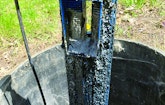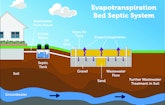
This aerial photo showing the installation of an EZFlow system installation is included in homeowner training materials at the NOWRA website. (Photos and graphics courtesy of the National Onsite Wastewater Recycling Association)
Sometimes onsite installers get so caught up in obtaining continuing education credits for their crews and efforts to learn new treatment technologies that they can forget another important role they play in wastewater training: schooling septic system users.
After all, unless the...









